Food possession, also known as resource guarding, is a scary problem. It’s also natural behavior for dogs. When resources are scarce, it makes sense to keep your toys, bed, food, or even humans to yourself.
That said, resource guarding in dogs is an undesirable behavior (it can even be downright dangerous). We’ll explore why it happens, how to prevent the problem, and what to do if it already exists.
What Exactly is Resource Guarding?
Resource guarding is the act of protecting something that a dog perceives as valuable. Dogs that resource guard may freeze, stare, growl, snarl, bark, lunge, or even bite. Dogs can become possessive of a number of things, including:
- Food
- Toys
- Sleeping spots
- Doorways
- Areas of a house
- People
These dogs aren’t trying to protect their human or keep strangers out of the house (although many people mistakenly believe this to be the dog’s intention). They are reacting to the threat of losing an object. In this way, possessiveness is an appropriate term. Most people still call this behavior “resource guarding.”
In this article, I’ll use “resource guarding” and “food possession” interchangeably. The prevention, treatment, and management of each type of resource guarding is similar.
Why Do Dogs Get Possessive Over Food?
Many wild animals guard their resources. Pigeons will chase each other off of perches. Troops of chimps patrol their borders to keep their territory safe. Dogs are no different.
Some suggest that dogs from shelters or other rough starts are more likely to guard resources (and in fact, young children growing up in situations where food is scarce have also been known to stockpile and hide food when transitioned to foster homes).
While this mindset may be true for canines, it’s also possible for dogs that have had plenty all their lives to guard resources.
Food possession in dogs is often due to an insecure dog. If your dog feels that his life is unpredictable, he’s more likely to resource guard. Comfortable, confident dogs are less likely to become food possessive.
Resource guarding can be a big issue when:
Dogs Over-Generalize
Resource guarding can be a huge problem when your pooch guards everything. I’m not just talking food bowls – I’m talking doorways, crumbs, beds, humans, toys, bowls, even stinky trash.
Managing a dog that isn’t crazy about sharing his dinner is fairly easy (although still best nipped in the bud early on). Dealing with a dog that is always on edge and constantly guarding everything is almost impossible. Dogs like these will need lots of management and training.
Dogs Overreact
Many owners don’t mind if their dog stiffens up a bit when you take away a full dinner bowl. But what if their dog bites a child? The difference is in the severity of the dog’s response. Resource guarding can have levels ranging from mild stiffening of muscles to full-on lunging and biting. Resource guarding is much more worrisome when it induces a strong reaction. When a dog overreacts to resources being taken away, things can get dangerous fast. Working on impulse control for dogs like these is key.
Dogs Have Too Light of a Trigger
Some dogs guard their food bowl to such an extreme that they must be fed inside of a crate. If anyone unknowingly walks too close to the dog, they’re in danger. These dogs have “bubbles” of personal space needed when they’re eating that are difficult to maintain for most owners.
Resource guarding is most dangerous is when it’s unpredictable, over-generalized, or an extreme reaction. A dog that gives a slight growl when you take his food bowl away isn’t necessarily a huge deal (although something that still should be worked on – your dog needs to feel comfortable enough with her humans that a missing food bowl is no big deal).
That’s very different from a dog that barks, lunges, bites, or growls when someone approaches anything he perceives as valuable. I’ve heard stories of dogs guarding old sneakers they found on the street. Dogs like these will need intense management and the help of an experienced trainer.
How Do I Prevent My Dog From Being Food Possessive?
Resource guarding is scary and relatively common, so don’t feel too guilty if you find that even your beloved fur baby is guilty of this bad behavior.
Many prospective owners want to know how to test for propensity to be food possessive. Some animal shelters have tests that they conduct to find resource guarding and types of aggression. Studies have shown that up to 40% of dogs that pass these resource guarding tests later show growling, lunging, snapping, or biting in the home. At the same, time, many dogs that show resource guarding in the shelter later have no problem at home.
The point is, resource guarding and food possession is hard to predict. All owners should work on some simple exercises to prevent resource guarding before it starts. I once had a foster dog that only growled at other female dogs when they approached her on the couch. This type of resource guarding wasn’t very intense and was very specific. It, therefore, was easy to manage. She was adopted to a home that didn’t have another female dog. Problem solved!
Exercises to Prevent Resource Guarding in Dogs
So how do we avoid it in our own dogs? I have a few favorite exercises that I think are great to prevent resource guarding in the home. I do them with all of my foster dogs.
Work on the “Leave it” Command
For dogs that guard a wide variety of things, this behavioral problem can be dangerous for them as well as for everyone around them. Imagine a dog that’s food possessive who gets a hold of a toxic chocolate bar. Not only do you not want to share your dessert, but it’s dangerous for your dog! Rather than putting yourself and your dog in danger, work on training your dog to “leave it” to diffuse situations like these.
Play Exchange Games
This is a fun one! It’s a solid solution for dogs who steal socks and clothing, and serves as an introduction to drop it for fetch, but it’s also great for preventing food possessiveness. Start out by giving your dog something they really like, such as a stuffed Kong. If your dog doesn’t show any resource guarding behaviors yet, you can just reach towards your dog and take the Kong away. Then give them a handful of tasty treats.
The treats have to be at least as tasty as the Kong to get your dog to agree to the swap (and depending on how tasty that Kong is, you may need some super high-value training treats).
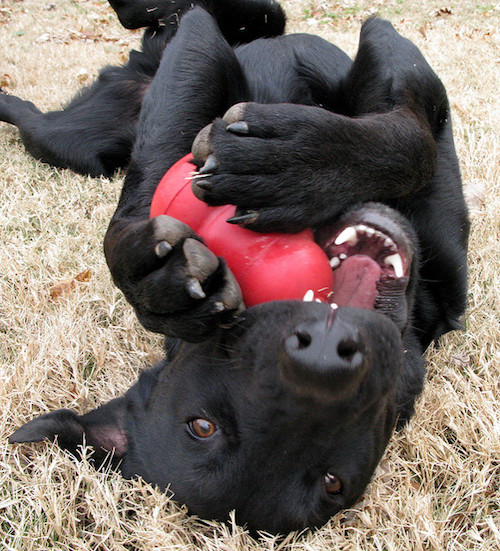
This exercise teaches your dog that when people come to take things away from them, good things happen! Get creative with this. Trade your socks for a Kong. Then give the dog treats in exchange for the Kong. Later, trade a tennis ball for a squeaky toy.
It’s important to make sure your dog is comfortable with you taking things away from him. The next time he grabs a dead rat or a chocolate bar on a walk, you can easily take away the dangerous thing because he knows that’s ok.
Practice Hand Feeding
Yes, I mean put your dog’s kibble into your cupped hands and let your dog eat from your hands. I personally don’t believe in food bowls. I think that, with few exceptions, dogs should be fed their meals from treat-dispensing toys and puzzle toys, as training rewards, or by hand. Puzzle toys work your dog’s brain and hand feeding builds a bond.
Additionally, hand feeding helps teach bite inhibition for dogs. They learn to be careful with their teeth around hands, and it builds a lot of trust. A dog that’s used to being hand fed won’t mind as much if hands come towards him while he’s eating. In my puppy kindergarten class, we strongly recommend that every member of the family hand feeds the puppy on a regular basis.
What If My Dog Is Already Food Possessive?
If your dog is already food possessive, I recommend getting a certified positive trainer. The International Association of Animal Behavior Consultants, Certification Council for Professional Dog Trainers, and Karen Pryor Academy all keep lists of fantastic, certified trainers that can help with your dog’s issues. Because the risk of escalation or getting bitten is so high, I don’t recommend working on resource guarding without an experienced professional by your side.
If your dog’s resource guarding is low-level and specific, you may be able to get by with just management and reading up on the topic.
Take my foster dog mentioned above. Sasha never escalated beyond growling and never generalized her issues beyond other female dogs. All we had to do was keep other female dogs away from her if she was on the couch. In cases like hers, management is easy.
Avoiding situations in which your dog will guard resources is a viable option. This strategy may fall apart if your dog goes on to guard a wide variety of things or is quick to escalate.
That being said, my cousins have a lovely 14-year-old English Pointer. Trinity is very food possessive with other dogs. She once ran across a room to attack another dog that was eating its dinner. So she was pretty bad!
My cousins decided that because she’s an only dog, they will just manage the problem. When we’re all together for Christmas, Trinity eats her meals in a crate. The other dogs get fed while she’s in the crate as well. She is ok with humans around food. She’s ok with dogs around treats or spilled food. The only issue is other dogs with food bowls. So even though she is quick to escalate or instigate a situation, my cousins are able to manage her problem.
If your dog struggles with food possession or resource guarding, I’d suggest to start keeping track of where and when the food possession issues happen. Is it just a favorite squeaker toy that sets your pooch off? Is it only around food bowls at dinner time? Or is it whenever a human walks within 5 feet of any fallen food? Knowing your dog’s triggers is imperative for management and training. Making a game plan, like the one my family uses at Christmas with Trinity, can make a very scary problem a liveable one.
I also put in place a few rules that help the humans avoid making any potential problems worse:
Don’t tease. I see a lot of pretty scary videos on the internet from people who don’t know how to read dog body language. Many of these involve low-level resource guarding. Especially with puppies, it’s easy to laugh when they give out a little growl around their food bowl. It’s cute, right? So we take out a video camera and move the food bowl away, again and again, to get that good shot of a cute puppy growling at its food bowl. The problem is, the dog is now practicing the skill of growling around its puppy food. As this puppy gets older, the problem could get worse. By teasing a low-level resource guarder, you’re potentially creating a dangerous adult dog that will bite someone.
Don’t punish. It’s tempting to want to punish your dog for growling at you. But think about it from your dog’s perspective – growling is one of the only ways available to them to say “no.”
If your dog is showing food possessiveness and you punish him for it, you’re just confirming their fears. Hitting, yelling at, shocking, or spraying your dog just shows them that yes, it’s worth trying to keep this human away from my stuff. Instead, work on exchange games! Teach your dog that when you approach them, good things happen.
How Do I Fix My Dog’s Resource Guarding?
If your dog growls, snarls, or snaps around food or toys, your first step should be to contact a licensed, insured, and certified positive-reinforcement based trainer in your area.
You can use the IAABC consultant locator or contact me at Journey Dog Training – I help people via Skype with minor resource guarding concerns.
With minor resource guarding, it’s possible to safely change your dog’s behavior. A basic resource guarding training protocol should involve two basic components:
Management
It’s imperative to set your dog up in an environment where she won’t practice resource guarding or hurt anyone who passes by.
For my clients, this often means feeding the dog behind a closed door and not removing the food bowl until the dog has left the room on her own.
This sort of approach can be all that you do if you are able to predict when your dog will resource guard – especially if it’s fairly limited.
Management keeps everyone safe and keeps your dog from “practicing” the unwanted behavior. However, it does not teach your dog how to behave instead.
Counterconditioning & Desensitization
To truly fix resource guarding, management is not enough. You need to actually change your dog’s emotional response to a stressful situation.
Before you run away from the big science-y words, just know that basically, we’re teaching your dog: If you let me walk near your food bowl/toy/favorite sleeping spot, I will give you something better.
You don’t actually remove your dog from her valued possession. Instead, you teach your dog that you coming near the valued possession makes things better.
Let’s go to an example that’s a bit tricky. Any time a dog guards something from other dogs, it’s a bit harder than when dogs guard from people.
My current dog, Barley, snarls at other dogs when they come near his food bowl. 99% of the time this is not a problem for me, because I only own one dog. But when I’m dogsitting, I work on counter-conditioning Barley to other dogs near his food. A basic training scenario looks like this:
- I tie Barley to a door. Ideally, I would have someone holding Barley’s leash and giving him treats while I handle the other dog.
- I give Barley food in a slow feeding dog bowl. The slow feeding dog bowl helps lengthen the training session. He starts to eat.
- I take the other dog on a leash and we enter the room. We move slowly towards Barley until Barley’s ears flick, his eyes lift, or he pauses eating. I am looking for the smallest possible indication that Barley has noticed the other dog. I stop right there. It’s very important not to move the second dog closer yet. If Barley stops eating, shows teeth, or snarls, we’ve pushed the training session way too far.
- The second that Barley indicates he’s noticed the other dog, I click or mark Barley’s behavior, and I toss a piece of rotisserie chicken into Barley’s bowl. The other dog and I retreat.
- We repeat. I don’t move closer until Barley starts to act soft and relaxed while the dog and I are at our first stop. Ideally, Barley actually will wag his tail when the other dog approaches, because he knows that the other dog makes rotisserie chicken appear.
- We slowly, over the course of lots of two-minute training sessions, move the second dog closer to Barley while Barley eats. Barley continues learning that a dog approaching him while he’s eating is awesome!
- It’s absolutely imperative that Barley never has a bad experience where he discovers that the other dog will steal food from him. This will undo all of our training!
Tossing extra food to a dog before he growls is the counterconditioning part. The dog is learning that something that used to be uncomfortable (company at dinner) is actually fantastic.
Gradually increasing the closeness of the second dog is the basics of desensitization. If you start out on day one with the second dog right next to the first dog, your counter-conditioning won’t work. It’s simply too stressful for your resource guarder to be that close to his “trigger.”
Using desensitization and counterconditioning together is your best weapon against resource guarding.
If you speak to a trainer or read information that suggests punishing your dog for growling, run far away. Your job and goal is to teach your dog that you approaching her “valuables” is a good thing!
[divider style=’full’]
Resource guarding and food possession isn’t an easy problem to fix. But with proper management, it can be lived with. Ideally though, it something you want to remedy because the worse case situation can be quite dangerous.
Implementing exercises like exchange games and leave it early in life can help prevent problems before they happen. If your dog already has resource guarding issues, hiring a certified trainer is your best bet for solving the problem safely and quickly – you can also try using the steps we outlined here!
Do you have a resource guarding dog? What helped you create a plan for management and training?




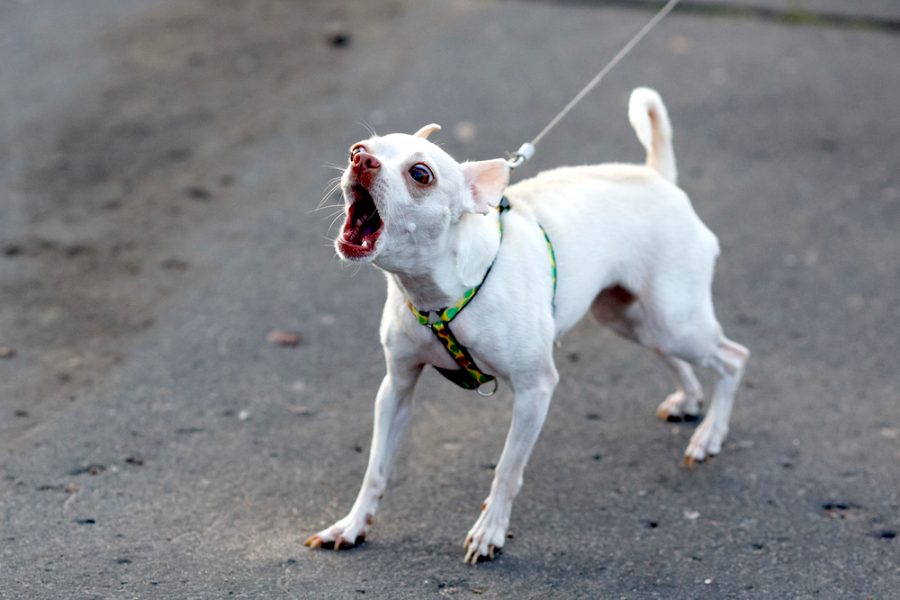


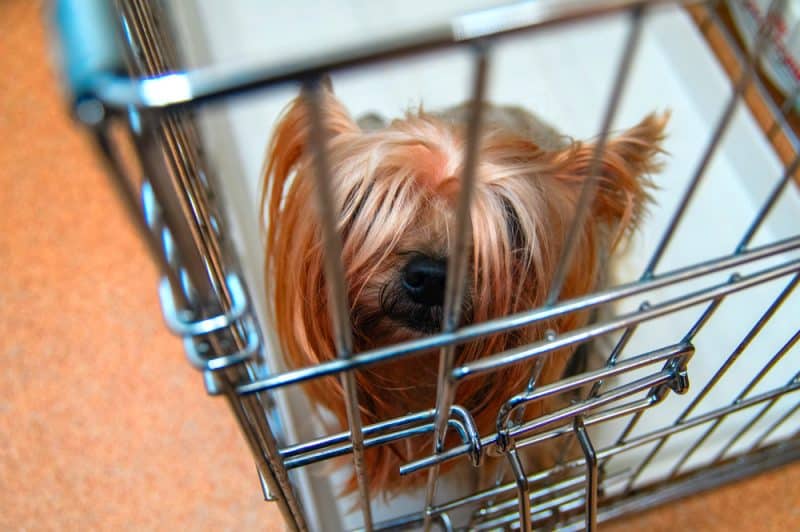
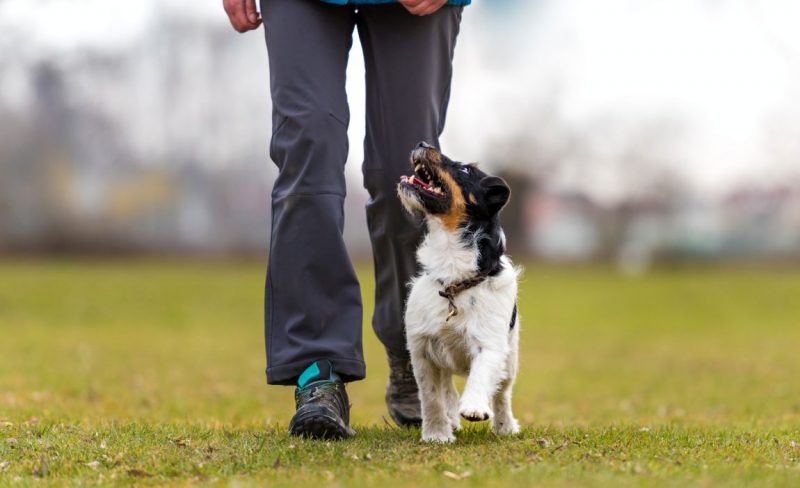
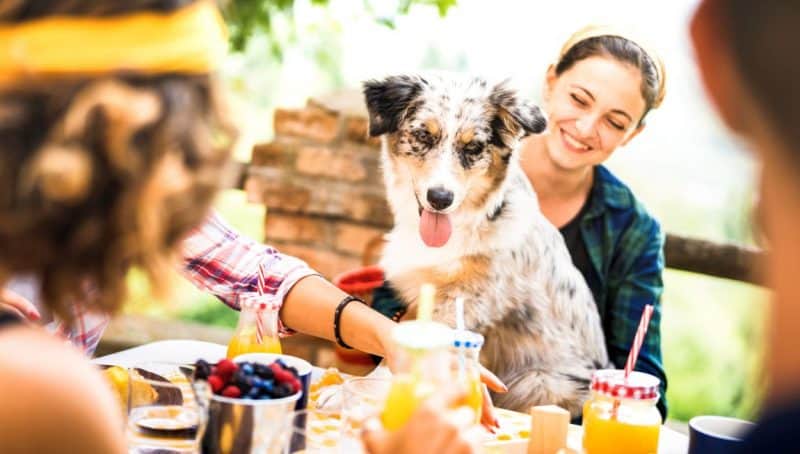
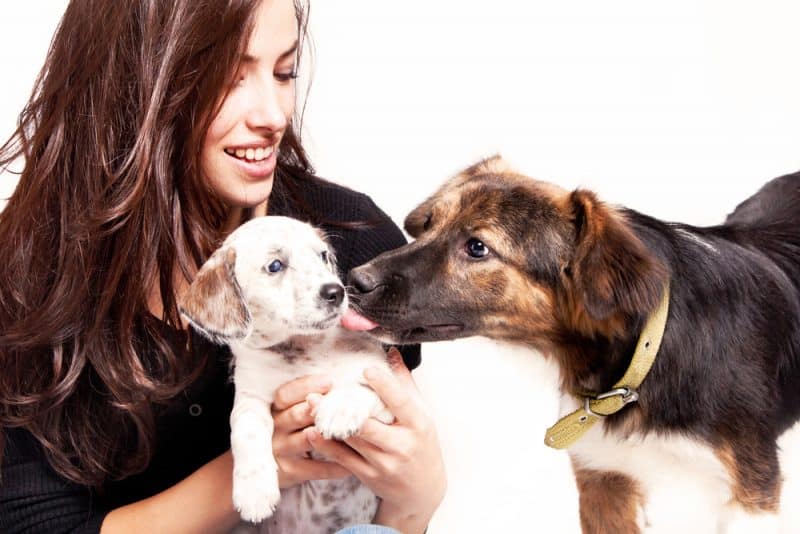
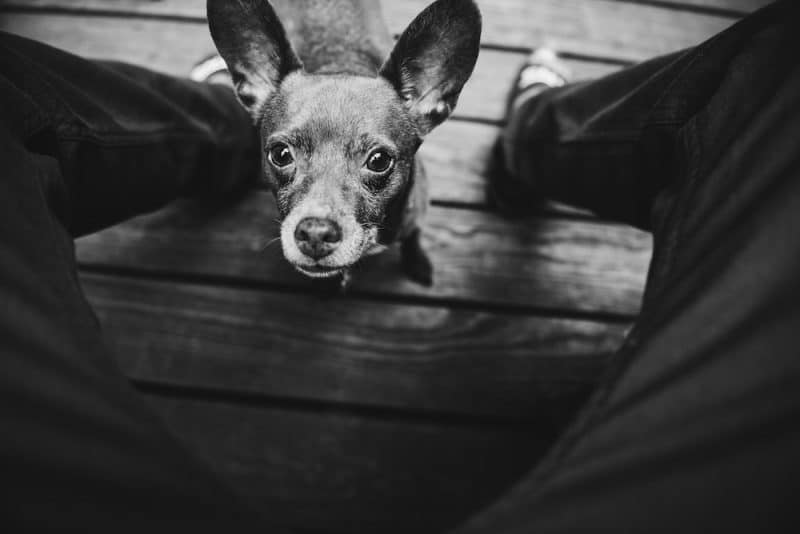
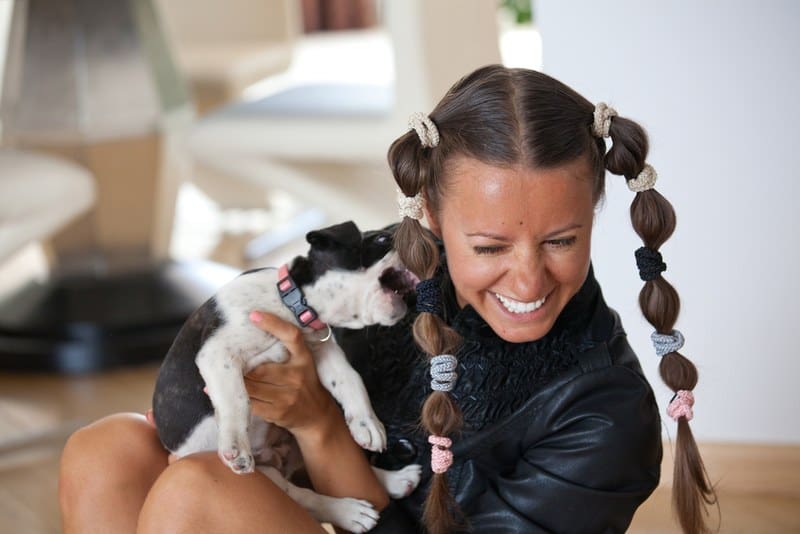
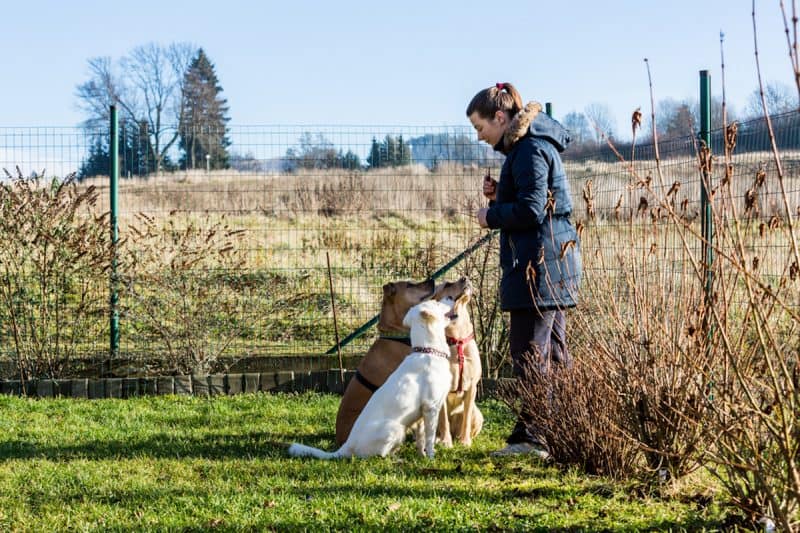

Leave a Comment